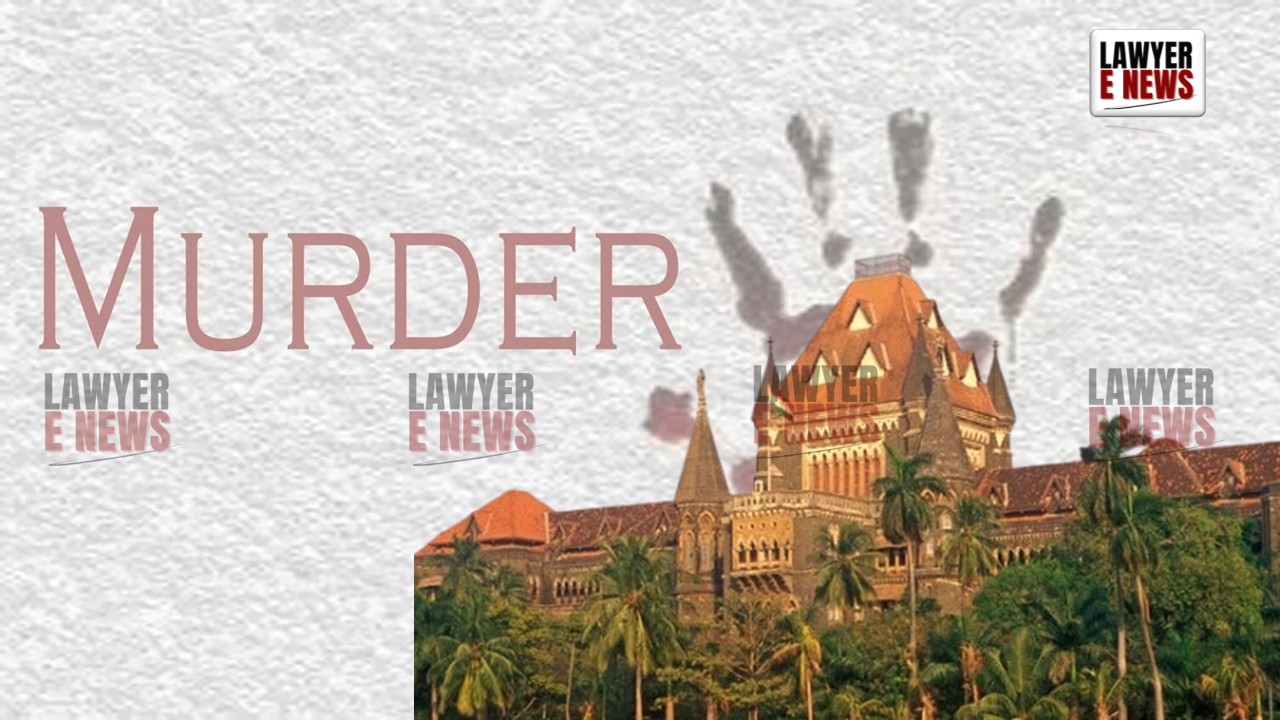-
by Admin
15 December 2025 6:31 AM



Failure to Explain Circumstances After Being Last Seen with Deceased Adds Crucial Link in Chain of Circumstantial Evidence: - Bombay High Court upheld the conviction of Eknath Kadam for murder under Section 302 IPC and robbery under Section 397 IPC, emphasizing that in a case based solely on circumstantial evidence, failure to explain circumstances after being last seen with the deceased provides an additional link in the chain of guilt.
The prosecution alleged that Eknath Kadam, who had been engaged by the deceased Anil Vaswani to assist in packing household articles, murdered him during the course of the shifting process. On 31st July 2008, after Vaswani’s daughters left home, leaving the deceased and the accused together, Vaswani was found dead with serious head injuries when they returned. Valuable jewelry and a mobile phone were found missing. The Appellant was apprehended 10 days later, and stolen jewelry was recovered from his possession.
The Trial Court convicted the Appellant, sentencing him to life imprisonment. Challenging this, Kadam filed the present appeal.
The primary legal issues were centered around the applicability of the "last seen theory," the proper conduct of identification parades, and whether the circumstantial evidence met the standards necessary for conviction.
The Court highlighted that “the prosecution’s case is based on circumstantial evidence, essentially with regard to the last seen theory," and cited Supreme Court judgments, noting: "The last-seen theory comes into play where the time-gap between the point of time when the accused and the deceased were last seen alive and when the deceased is found dead is so small that possibility of any person other than the accused being the author of the crime becomes impossible." (State of U.P. v. Satish).
The Court further reiterated the established principle from Karakkattu Muhammed Basheer v. State of Kerala that in cases based on circumstantial evidence, "suspicion, however grave, cannot substitute proof," and emphasized the "Panchsheel Principles" requiring that the circumstances proved must form a complete chain excluding every hypothesis except guilt.
On the application of Section 106 of the Indian Evidence Act, the Court observed: "If a person is last seen with the deceased, he must offer an explanation as to how and when he parted company. If he fails, the Court can consider his silence as an additional link completing the chain of circumstances." Referring to State of Rajasthan v. Kashi Ram, the Bench stressed that the burden was upon the Appellant to explain what transpired between 4:30 p.m. and 8:30 p.m., but he failed to do so.
Rejecting arguments of improper identification parade and unreliable seizure evidence, the Court held that the evidence of the deceased’s daughter (PW1), corroborated by recovery of jewelry, blood-stained clothes, chemical analysis reports, and post-mortem findings of brutal injuries, formed an unbreakable chain pointing conclusively towards the accused’s guilt.
The Court observed: "An in-depth analysis of the testimony of the witnesses, substantial evidence, and corroborative forensic evidence clearly establishes the Panchsheel of proof of guilt based on circumstantial evidence."
The argument that emotional attachment to the jewelry invalidated its identification was summarily rejected. As for the identification parade, the Court held minor lapses did not vitiate its evidentiary value, particularly given the direct in-court identification and other overwhelming evidence.
Finally, noting the absence of any plausible explanation from the Appellant under Section 313 CrPC, the Court concluded that the prosecution had established its case beyond reasonable doubt.
The Bombay High Court dismissed the appeal, confirmed the conviction and sentences awarded by the Trial Court, and upheld the life imprisonment of Eknath Kadam. The judgment stands as a reaffirmation of the principles guiding the use of circumstantial evidence and the burden cast under Section 106 of the Evidence Act when the accused is last seen with the deceased.
Date of Decision: 24th April 2025
